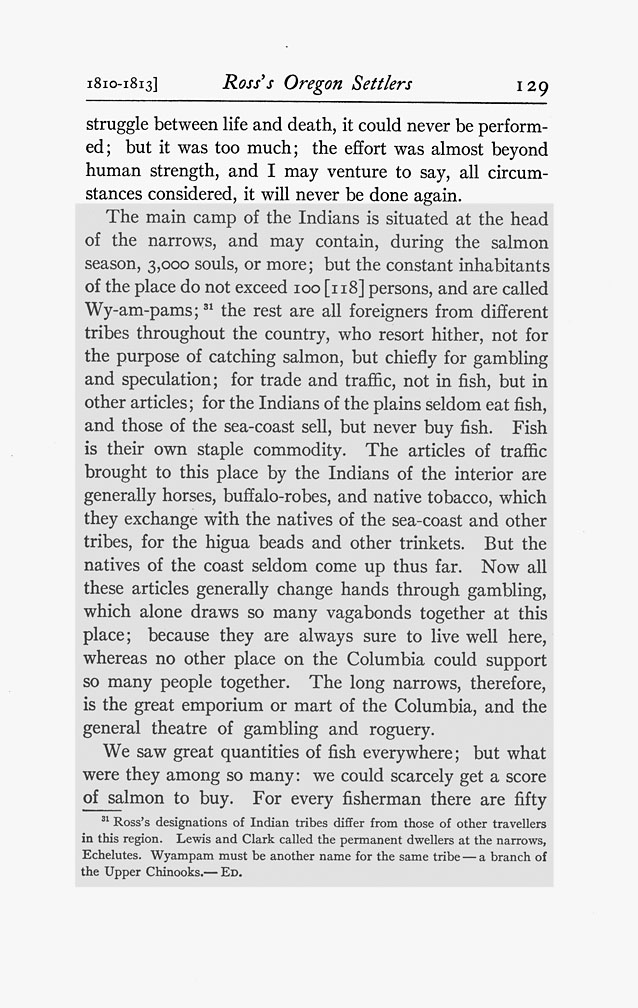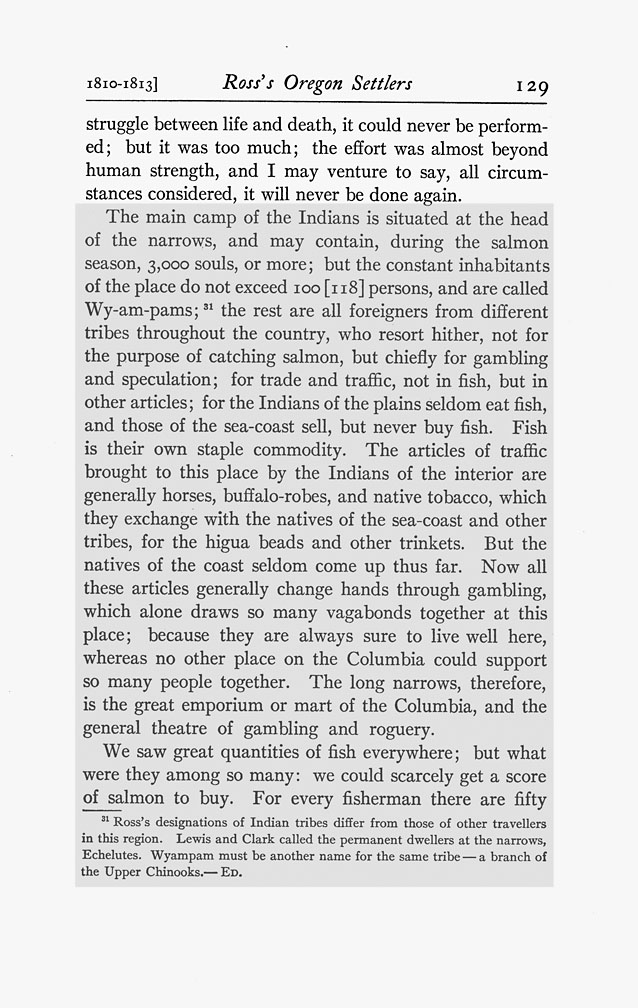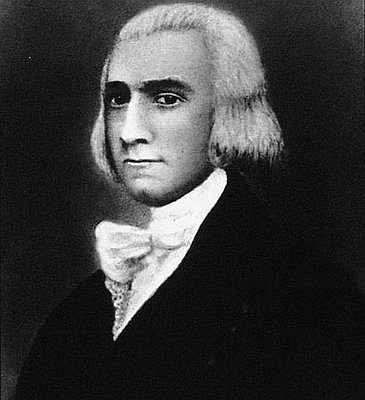- Catalog No. —
- OHS Lib 9178T428eV7
- Date —
- August 1811
- Era —
- 1881-1920 (Industrialization and Progressive Reform)
- Themes —
- Environment and Natural Resources, Exploration and Explorers, Native Americans, Trade, Business, Industry, and the Economy
- Credits —
- A. H. Clark
- Regions —
- Columbia River
- Author —
- Alexander Ross
The Columbia River Trade Network
Alexander Ross, an American fur trader, provided this description of the Columbia River trade rendezvous in August 1811. He estimated that approximately 3,000 Indians had gathered in the area from all over the region to fish, trade, and socialize. Like Lewis and Clark, who called the ten-mile stretch of the Columbia River from The Dalles to Celilo Falls the “Great Mart of all this Country,” Ross referred to The Dalles-Celilo area as the “great emporium or mart of the Columbia.”
Trade was an important part of the Native economy of the Pacific Northwest prior to white settlement. A network of trade routes—sometimes referred to as the Columbia River trade network—connected major trading and resource procurement sites throughout the region. The most important of these sites was The Dalles-Celilo area, the largest trading center in the Northwest and perhaps in the whole of western North America.
Native peoples came from every direction to trade at The Dalles and Celilo Falls. From the north Indian traders brought elaborately decorated coiled baskets, skins, and berries. From the south came obsidian, bows, and slaves. People from the east brought horses, camas, and buffalo hides, while those from the west brought wapato, whale oil, and shells, including the highly prized dentalium shell, which functioned as a common currency. The people who lived at The Dalles specialized in salmon, preparing an estimated one million pounds a year for trade purposes alone. Despite Ross’s claim to the contrary, the salmon trade was an important aspect of the area’s economy and probably had been for several thousand years.
Ross is correct, however, in his observation that gambling was one of the more popular ways of determining the terms of exchange. Gambling was an effective though unpredictable method of distributing wealth. Although Ross does not mention them, other forms of exchange, such as bartering and gifting, were also widely practiced.
The stretch of the river from The Dalles to Celilo Falls continued to be a lively center for Native trading and socializing until the 1950s, when The Dalles Dam destroyed the fishery and flooded most of the remaining Native settlements in the area.
Further Reading:
Stern, Theodore. “Columbia River Trade Network,” in Handbook of North American Indian. Vol. 12, Plateau. Washington, D.C, 1998.
Murdock, George Peter. “The Tenino Indians.” Ethnology 19 (1980): 129-149.
Ross, Alexander. Adventures of the First Settlers on the Oregon or Columbia River, 1810-1813. Corvallis, Oreg., 2000.
Written by Cain Allen, © Oregon Historical Society, 2004.


